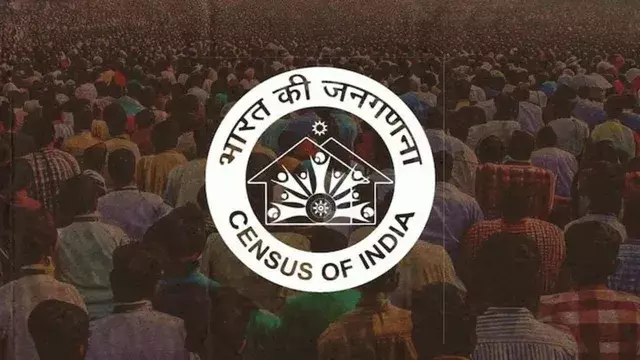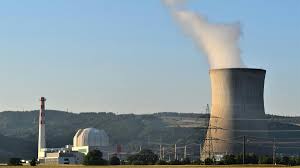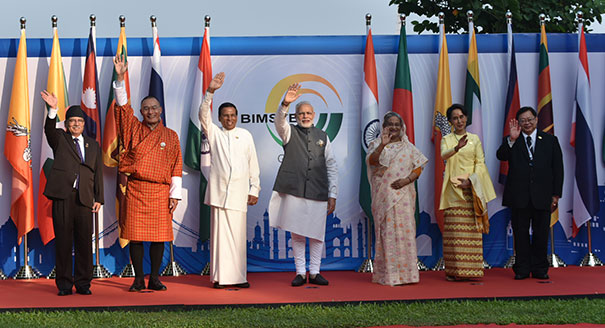- Courses
- GS Full Course 1 Year
- GS Full Course 2 Year
- GS Full Course 3 Year
- GS Full Course Till Selection
- Answer Alpha: Mains 2025 Mentorship
- MEP (Mains Enrichment Programme) Data, Facts
- Essay Target – 150+ Marks
- Online Program
- GS Recorded Course
- Polity
- Geography
- Economy
- Ancient, Medieval and Art & Culture AMAC
- Modern India, Post Independence & World History
- Environment
- Governance
- Science & Technology
- International Relations and Internal Security
- Disaster Management
- Ethics
- NCERT Current Affairs
- Indian Society and Social Issue
- NCERT- Science and Technology
- NCERT - Geography
- NCERT - Ancient History
- NCERT- World History
- NCERT Modern History
- CSAT
- 5 LAYERED ARJUNA Mentorship
- Public Administration Optional
- ABOUT US
- OUR TOPPERS
- TEST SERIES
- FREE STUDY MATERIAL
- VIDEOS
- CONTACT US
The Concerns of South Indian States on Delimitation
The Concerns of South Indian States on Delimitation
08-02-2023
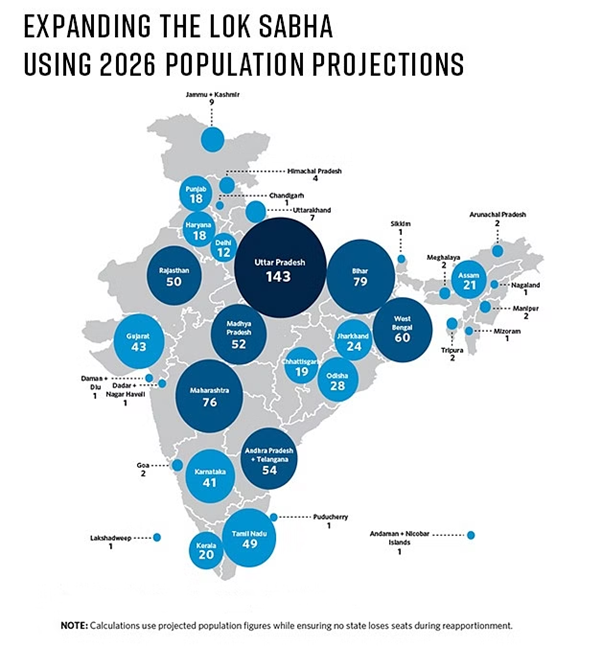
Why in News?
It is observed that the delimitation of Lok Sabha seats on the basis of the population can be unfair to Southern states, which have implemented family planning programs more effectively than the states in North India.
- It is showing that even after better performance, the southern states may get lesser political representation and reduced funds.
What is the Issue?
- The argument is that Southern states should be recognized and rewarded for their efforts to control population growth.
- The national delimitation exercise has raised concerns, about the unequal representation of states in the Lok Sabha.
What is Delimitation?
- Delimitation is the act of redrawing boundaries of an Assembly or Lok Sabha seat to represent changes in population over time.
- This exercise is carried out by a Delimitation Commission, whose orders have the force of law and cannot be questioned before any court.
Why is it needed?
- The objective is to redraw boundaries (based on the data of the last Census) in a way so that the population of all seats, be the same throughout the State.
- Aside from changing the limits of a constituency, the process may result in a change in the number of seats in a state.
How is delimitation carried out?
- Delimitation is carried out by an independent Delimitation Commission (DC).
- Under Article 82, the Parliament enacts a Delimitation Act after every Census.
- Once the Act is in force, the Union government sets up a DC made up of a retired Supreme Court judge, the Chief Election Commissioner and the respective State Election Commissioners.
Working of DC:
- The Commission determines the number and boundaries of constituencies in a way that the population of all seats be equal.
- The Commission also works to identify seats reserved for Scheduled Castes and Scheduled Tribes.
- The delimitation process is done on the basis of the latest Census, but whenever there is the case of difference of opinion among members of the Commission, the opinion of the majority prevails.
Implementation of Delimitation:
- The draft proposals of the DC are published in the Gazette of India/states concerned and at least two vernacular papers for public feedback.
- The Commission also holds public sittings.
- After hearing the public, it considers objections and suggestions received during public sittings, and brings changes, wherever possible.
- The final order is published in the Gazette of India and the State Gazette and comes into force on a date specified by the President.
How often has delimitation been done in the past?
- The first delimitation exercise in 1950-51 was carried out by the President (with the help of the Election Commission).
- The Constitution at that time was silent on who should undertake the division of states into Lok Sabha seats.
- This delimitation was temporary as the Constitution mandated redrawing of boundaries after every Census.
- Pointing out that the first delimitation had left many political parties and individuals unhappy, the EC advised the government that all future exercises should be carried out by an independent commission.
- This suggestion was accepted and the DC Act was enacted in 1952.
- DCs have been set up four times, 1952, 1963, 1973 and 2002 under the Acts of 1952, 1962, 1972 and 2002.
Why postponed till 2026?
- There was no delimitation after the 1981 and 1991 Censuses.
- Although the freeze on the number of seats in Lok Sabha and Assemblies should have been lifted after the 2001 Census, but another amendment postponed this until 2026.
- This was justified on the ground that a uniform population growth rate would be achieved throughout the country by 2026.
- So, the last delimitation exercise, started in July 2002 and completed on May 31, 2008, was based on the 2001 Census.
How can be Delimitation is Being Unfair to the Southern States?
- Before 1990s, Northern states were performing better than Southern states in terms of income and poverty levels.
- The economic situation of Southern states has improved dramatically since the turn of the 21st century.
- This good performance of southern states has a significant impact on the region and has helped to drive growth and development.
- The combined Gross Domestic Product (GDP) of just three States, Karnataka, Kerala and Tamil Nadu is greater than 13 States in the East.
- The Annual Status of Education Reports (ASER) data suggests that southern regions have performed better in terms of children being enrolled in schools and having better learning outcomes, compared to other states.
- Further, a higher proportion of graduates in the southern States indicates greater set of skills.
For example, in 2011, only 5% of Uttar Pradesh’s population was graduated, while in Tamil Nadu, nearly 8% of its population was graduated.
- During the Covid-19 pandemic too, southern states have shown good performance, as Tamil Nadu has 314 testing centres for a population of 78.8 million.
- The better educational and health outcomes also indicate, the presence of quality of decision-making there.
- The expectation for better public services and high civic activism suggests that the electorate there is more likely to vote for better governance compared to the north.
- The existing distribution of parliamentary constituencies across the States, based on population goes in favour of populous States such as Uttar Pradesh, Bihar.
- If delimitation occurs, Southern states will face a decrease in the number of seats allocated to them, compared to the northern states.
- Hence, during the electoral representation, it should be kept in mind that it is not the number of people, but their quality that should be the deciding factor.
What are the Issues in this Regard?
- According to the 2019 research paper, India’s Emerging Crisis of Representation, if the delimitation is carried out according to the 2031 Census (the earliest scheduled after 2026), Bihar and Uttar Pradesh alone would gain as many as 21 seats in total, while Tamil Nadu and Kerala together will lose 16 seats.
- The scheduled delimitation and reallocation of seats may result in not only a loss of seats for southern states but may also polarise the political power of the parties with their base in the north, shifting power toward the north and away from the south.
- The exercise will also affect the division of seats reserved for the Scheduled Castes and Scheduled Tribes (SC/ST) in each state.
- After the 15th Finance Commission used the 2011 Census as a basis for its recommendation, concerns were raised about southern states losing funding and representation in parliament.
- Previously, the 1971 Census was used as the base for funding and tax devolution recommendations to states.
- In 1976, Prime Minister Indira Gandhi, during the Emergency, suspended the revision of seats until after the 2001 Census.
- In 2001, the Parliament extended this freeze until the next decennial census after 2026, scheduled for 2031 as per the Constitution (84th Amendment) Act, 2002.
- Therefore, if Lok Sabha seats are reallocated after 2031, legislators and policy makers will have to consider the demographic and political changes in the country over the past 60 years.
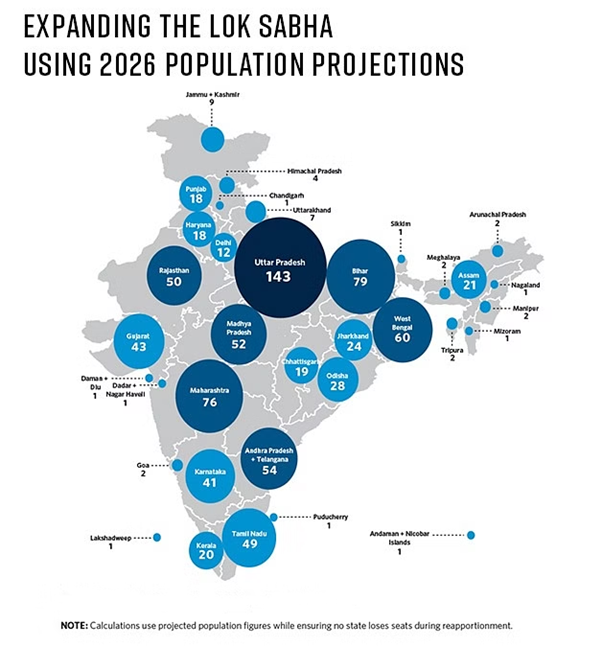
What can be done?
- Government should work for certainty and stability of southern states in terms of funding and representation, which can be done by fixing the resource allocation after 2031, without any further delays due to political or policy challenges.
- The advantage of increasing the number of seats in the Lok Sabha would lead to more efficient governance as administrative agencies would not be burdened by a large population, allowing for faster and more effective decision making.
- Increasing the total number of seats in Parliament could be considered to ensure that no state loses the seats it currently has. This proposal may be under consideration by the Union government.
- Reports suggest that the architects of the new Lok Sabha, being built as part of the Central Vista project, have been asked to plan for at least 888 seats in the lower house.
- This would allow for adequate representation for all states and prevent any state from losing its current number of seats.
Must Check: Top IAS Coaching Institute In Delhi

